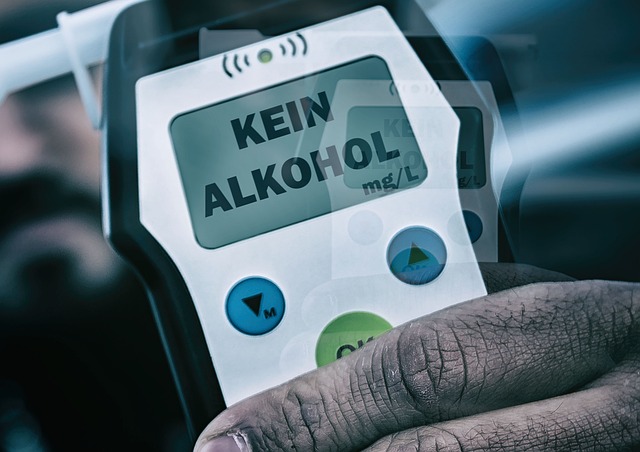Commercial Driver DUI Defense: College Campus Prevention Strategies

Commercial drivers on college campuses face stringent DUI laws. College Campus DUI Prevention progra…….
In the vibrant, yet potentially perilous environment of college campuses worldwide, the issue of drunk driving (DUI) among students demands meticulous attention and proactive strategies. College campus DUI prevention is a multifaceted initiative aimed at curtailing the prevalence of impaired driving among young adults, thereby fostering safer communities and reducing tragic outcomes. This comprehensive article delves into the intricacies of this critical endeavor, exploring its historical roots, global impact, economic implications, technological innovations, policy frameworks, challenges, successful implementations, and future prospects. By examining these aspects, we gain valuable insights into how institutions, policymakers, and individuals can collectively combat DUI on college campuses, ensuring a brighter, safer future for students and surrounding communities.
Definition: College campus DUI prevention refers to a systematic approach and set of strategies employed by educational institutions, law enforcement agencies, and community organizations to raise awareness, educate students, implement strict policies, and promote alternative transportation options to deter drunk driving among college students. It involves a holistic strategy that goes beyond traditional punishment, focusing on primary prevention, early intervention, and long-term behavioral change.
Core Components:
Education and Awareness: This involves comprehensive educational programs, workshops, and campaigns aimed at informing students about the dangers of DUI, responsible drinking practices, and available alternative transportation options.
Policy Development: Institutions create and enforce strict policies regarding alcohol consumption, with clear guidelines on acceptable limits, consequences for violation, and penalties for DUI offenses.
Law Enforcement Collaboration: Close partnerships between campus security, local police, and traffic enforcement agencies facilitate coordinated efforts to identify and apprehend impaired drivers, ensuring a swift response to potential risks.
Alternative Transportation Solutions: Providing accessible and affordable alternatives such as shuttle services, ride-sharing programs, designated driver networks, and public transportation options reduces the reliance on personal vehicles for students who have been drinking.
Historical Context:
The evolution of college campus DUI prevention can be traced back to the 1980s when growing concerns about drunk driving led to the establishment of dedicated task forces and initiatives. Early efforts focused primarily on public awareness campaigns and stricter law enforcement. Over time, the approach expanded to include comprehensive programs that address social, cultural, and environmental factors contributing to DUI among college students. The 1990s saw a surge in research and policy development, leading to more effective strategies and a better understanding of the complex nature of this issue.
College campus DUI prevention is a global concern, with various regions adopting unique strategies to tackle the problem. Here’s an overview of its international influence:
| Region | Approach | Notable Success Stories | Challenges |
|---|---|---|---|
| North America | Comprehensive, multi-pronged approach involving law enforcement, education, and policy reforms. | USA: Successful implementation of ‘Zero Tolerance’ policies on college campuses, leading to significant reductions in DUI rates. | High costs of enforcement and varying state/provincial laws make a unified strategy challenging. |
| Europe | Emphasis on public health and harm reduction strategies, including peer education and alternative transportation. | UK: Effective use of ‘Safe Zones’ around bars and clubs, reducing late-night drinking-related incidents. | Cultural differences in alcohol consumption patterns require tailored interventions. |
| Asia Pacific | Focus on cultural sensitivity and community engagement, combining traditional methods with modern technology. | Australia: Successful rollout of ‘Lock It Up’ campaigns targeting underaged drinking and DUI. | Limited cross-border cooperation and inconsistent enforcement across diverse legal systems. |
| Middle East & Africa | Relatively new focus, adopting models from other regions while adapting to local cultural norms. | Qatar: Pioneering ‘Drive Safe’ campaign promoting responsible driving among young adults. | Insufficient resources for large-scale implementation and resistance to change in some communities. |
These regional variations highlight the need for tailored strategies that consider cultural, social, and legal contexts while sharing best practices globally.
The economic implications of college campus DUI prevention are multifaceted:
Direct Costs: Law enforcement agencies incur expenses related to traffic stops, arrests, court proceedings, and rehabilitation programs for impaired drivers. These costs can significantly impact local budgets.
Indirect Costs: DUI incidents often result in property damage, medical emergencies, legal fees for students, and potential loss of life, all of which contribute to long-term economic burdens on individuals and society.
Economic Growth: Effective prevention strategies can lead to positive economic outcomes. Reduced crime rates, improved public safety, and enhanced student retention can attract more students and boost the overall economic health of a region.
Market Dynamics: The success of DUI prevention initiatives may influence related industries, such as transportation services, healthcare, and insurance, potentially driving innovation and market growth in these sectors.
Technology plays a pivotal role in modernizing college campus DUI prevention efforts:
Mobile Applications: Apps designed for ride-sharing, alcohol tracking, and emergency communication provide students with convenient tools to make safe choices while drinking.
Data Analytics: Advanced analytics help identify hotspots for DUI incidents, allowing law enforcement and campus authorities to allocate resources more efficiently.
Social Media Campaigns: Utilizing social media platforms enables the rapid dissemination of safety messages and real-time updates on alternative transportation options.
Internet of Things (IoT): IoT devices can be employed to monitor drinking patterns and trigger alerts when excessive consumption is detected, facilitating timely interventions.
Successful college campus DUI prevention relies on robust policy frameworks:
Minimum Legal Drinking Age (MLDA): Enforcing a minimum age for alcohol purchase and consumption has been proven effective in reducing DUI rates among young adults.
Zero Tolerance Policies: Many institutions have adopted ‘zero tolerance’ rules, stipulating strict penalties for students found drinking while under the influence, including suspension or expulsion.
Licensure and Registration: Some countries implement unique licensing systems with regular registration renewals, incorporating educational modules and penalty points for infractions related to DUI.
Collaboration Across Agencies: Effective coordination between campus security, local police, health services, and student affairs ensures a comprehensive response to DUI concerns.
Despite significant progress, college campus DUI prevention faces several challenges:
Student Resistance: Some students may perceive DUI prevention programs as intrusions on their autonomy or view them as punitive rather than proactive measures. Engaging students in program design and promoting peer leadership can help address this issue.
Cultural Normalization of Drinking: In some cultures, excessive drinking is normalized, making it challenging to encourage responsible consumption. Cultural sensitivity and community engagement are essential for successful interventions.
Limited Resources: Implementing comprehensive prevention programs requires financial resources for education, technology, and enforcement. Securing funding from various sources, including government, private organizations, and student fees, can help overcome this challenge.
Enforcement Challenges: Consistent and effective law enforcement is crucial but may be hindered by resource allocation issues, varying legal frameworks across regions, and the dynamic nature of college campuses.
Several institutions have achieved remarkable success in reducing DUI rates through innovative approaches:
University of California, Santa Barbara (UCSB): UCSB’s ‘Alcohol Education Program’ combines mandatory online education, peer mentoring, and a robust support system for students with a history of alcohol-related issues. This holistic approach has led to significant reductions in DUI incidents.
University College London (UCL): UCL’s ‘Harm Reduction’ strategy, focusing on reducing the harm associated with drinking rather than abstinence, includes low-cost bars, peer support, and creative marketing campaigns that appeal to students’ values.
National University of Singapore (NUS): NUS implemented a comprehensive ‘DUI Zero Tolerance’ policy, combining strict penalties, education, and community involvement. Their approach has resulted in one of the lowest DUI rates among Asian universities.
Looking ahead, college campus DUI prevention can benefit from emerging trends and technologies:
Personalized Education: Utilizing artificial intelligence (AI) and machine learning algorithms to tailor educational content based on individual drinking patterns and risk factors.
Virtual Reality (VR) Training: Developing VR simulations for peer counseling, emergency response training, and virtual field trips to bars/clubs can enhance the effectiveness of education programs.
Community Engagement: Expanding community outreach efforts to involve local businesses, transportation providers, and parents in promoting safe drinking culture.
International Collaboration: Establishing global networks and knowledge-sharing platforms to facilitate the exchange of best practices, research findings, and innovative solutions.
Adaptive Policy Making: Developing adaptive policies that respond to evolving trends in drinking patterns, technology, and social norms, ensuring their relevance and effectiveness over time.
In conclusion, college campus DUI prevention is a complex yet critical endeavor that requires collective efforts from institutions, policymakers, and individuals. By understanding the global impact, leveraging technological advancements, implementing robust policies, addressing challenges, and learning from successful implementations, we can create safer college environments and positively influence the lives of young adults worldwide.

Commercial drivers on college campuses face stringent DUI laws. College Campus DUI Prevention progra…….

College campuses combat growing DUI incidents involving pedestrians through multi-faceted strategies…….

College campuses nationwide enforce stringent zero-tolerance DUI policies to enhance student and com…….

Breath Alcohol Testing (BAL) is a critical tool for College Campus DUI Prevention, offering accurate…….

College campuses face unique DUI challenges due to high student alcohol consumption and low legal dr…….

College campuses combat drug-impaired driving through comprehensive prevention programs, including e…….

College campuses face unique challenges in online privacy, impacting DUI prevention efforts. Student…….

College Campus DUI Prevention initiatives focus on educating students and reducing alcohol-impaired…….

College campuses adopt innovative strategies for College Campus DUI Prevention, including educationa…….

Homeownership provides legal protection and autonomy over property, beneficial for asset protection,…….